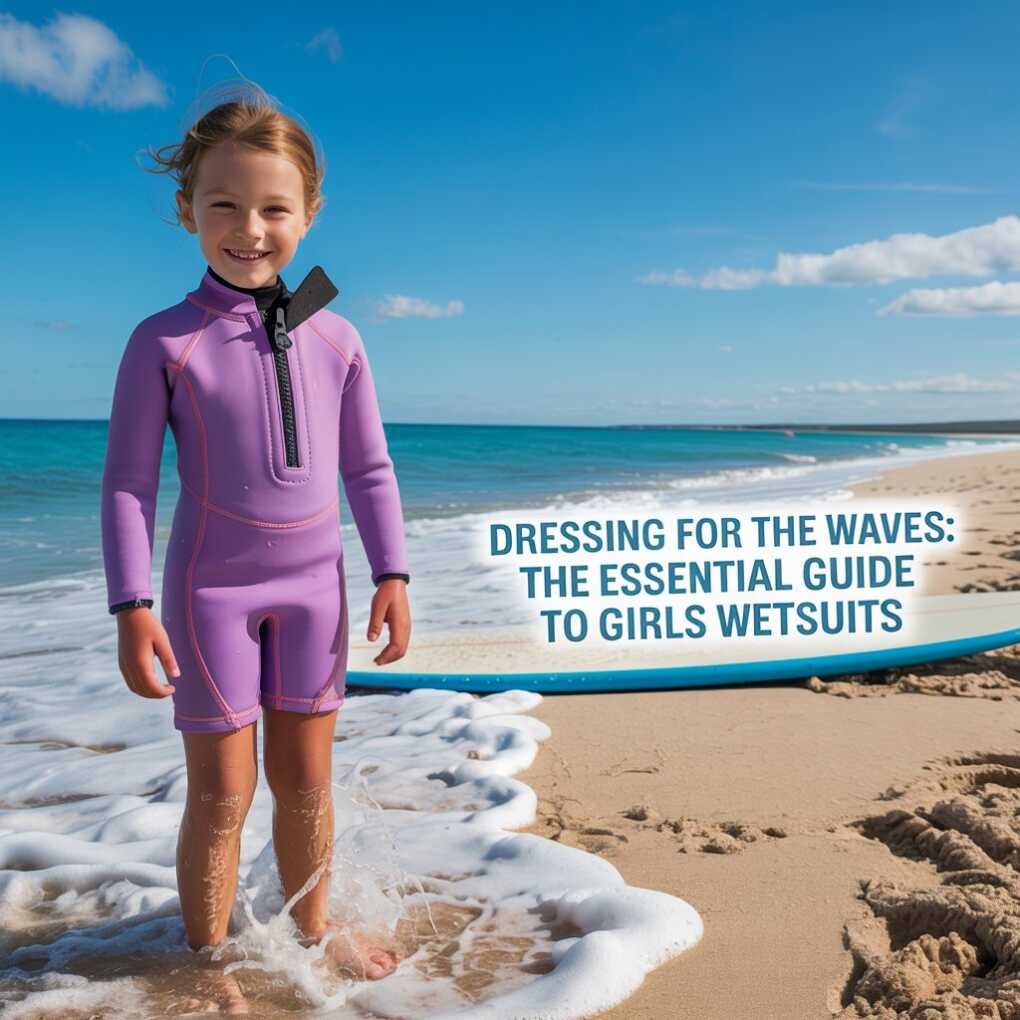For anyone who enjoys water sports or spends time in the ocean, a reliable wetsuit is an indispensable part of their gear. It provides warmth, protection, and a certain level of buoyancy. This guide will delve into the essentials of choosing the right girls wetsuit, ensuring safety, comfort, and style as they take on the waves.

Understanding the Purpose of a Wetsuit
Before selecting a wetsuit, it is crucial to understand its functions. Wetsuits are designed to trap a thin layer of water between the suit and the skin. Your body heats this water, which provides insulation against the cold ocean. Made primarily from neoprene, wetsuits also offer some protection from UV rays, sand abrasion, and stings from marine creatures.
Choosing the Right Fit
A critical aspect of wetsuit selection is the fit. A wetsuit should fit snugly without constraining movement or breathing. It’s important for the wetsuit to form a second skin so that only a minimal amount of water can enter, ensuring that the insulating layer functions effectively. A suit that is too loose will allow too much water circulation, resulting in loss of heat.
Thickness and Water Temperature
The thickness of a wetsuit is measured in millimetres and is indicative of the warmth it will provide. The thicker the suit, the warmer it will be. Thickness is usually denoted with two numbers – the first representing the torso thickness and the second for the limbs. For example, a 5/4 mm wetsuit has 5 mm thick neoprene in the torso and 4 mm in the arms and legs. It’s essential to choose the wetsuit thickness based on the water temperature you’ll be encountering.
The Style of Wetsuits
There are various styles of wetsuits, each serving different needs. Full suits cover the entire body and are ideal for colder waters. Spring suits, which often have short arms, short legs, or both, are suitable for warmer conditions. For those looking for minimal coverage while still receiving the benefits of neoprene, there are wetsuit tops, vests, and shorts.
Seams, Zippers, and Additional Features
Seams can make a significant difference in both warmth and flexibility. Flatlock stitching is common and suitable for warmer water, whereas sealed seams are better for cold water as they minimise water ingress. Zippers, usually found on the back of the suit, can vary in length; some may prefer a chest zip for increased flexibility and a better seal.
Additional features, such as knee pads for durability, key pockets for convenience, or thermal linings for added warmth, can also be an essential factor in deciding on a wetsuit. Reflect on what features will enhance your experience in the water.
Considerations for Different Ages and Proficiency Levels
When selecting a girls wetsuit, consider the age and proficiency level of the wearer. Junior wetsuits might have different considerations, such as room for growth, while those for more proficient young surfers may have features that cater to increased activity and dexterity in the water.
Maintenance and Care
To prolong the life of a wetsuit, proper maintenance is key. Rinse your suit with fresh water after each use to rid it of salt, chlorine, and other elements. Avoiding direct sunlight when drying the suit will prevent the neoprene from degrading. Hang it on a wide hanger to prevent creases and never fold it, as folding can cause cracks in the neoprene over time.
The Importance of a Sustainable Choice
With growing concerns over environmental sustainability, it’s worth considering the ethical and ecological footprint of your wetsuit. Many brands are now offering wetsuits made from eco-friendly materials like limestone neoprene or recycled rubber. These alternatives aim to reduce the impact on the environment without compromising the suit’s performance.
Trying Before Buying
It’s always beneficial to try on different wetsuits before making a purchase. This allows you to test the fit and flexibility and to gauge the ease of getting in and out of the suit. Each brand may have slightly different sizing, so trying on a range of wetsuits is recommended to find the best fit for your body shape and size.
Advancements in Wetsuit Technology
Wetsuit technology is continually advancing, with new features and materials being developed to enhance the wearer’s experience. Some wetsuits now have features such as quick-dry technology, thermal liners to reflect body heat, and ergonomically tested fits to improve performance. Staying informed of the latest developments can help you select a suit that is at the forefront of innovation.
Wetsuit Accessories
Beyond the wetsuit itself, consider investing in accessories that can complement your wetsuit. Gloves, boots, and hoods can provide additional warmth in colder conditions, while rash vests worn under your wetsuit can prevent chafing and enhance comfort.
Why Girls Wetsuits Are Unique
Girls wetsuits are engineered to meet specific requirements such as fit, style, and functionality that are unique to the female form. The design must offer both support and flexibility where required. Ensuring that the wetsuit caters to these needs is vital for providing a comfortable and efficient water sports experience.
Finding the right wetsuit can substantially enhance your water-based activities. It’s about comfort, protection, and matching your suit to the conditions you’ll face. A carefully chosen girls wetsuit will not only keep you warm and safe in the water but also allows you to focus on the enjoyment and challenge of your aquatic adventures.
Visit Summer Sun Label to explore a variety of carefully designed girls wetsuits that cater to all the considerations mentioned in this guide, ensuring a fantastic experience in the water for every young enthusiast.
